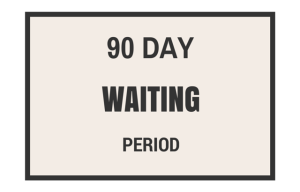Federal 90-day Waiting Period Options
On January 1, 2015, the federal government imposed a maximum 90-day waiting period for new employees to be added to their employer’s health insurance. This new rule was, of course, part of the Affordable Care Act.
Traditionally, employers were allowed to choose a waiting period to their liking with some employers choosing 6 months or even a year after the employee’s date of hire to add them on to their health plan. Those days are now long behind us. Employers who did have long waiting periods had to choose a new waiting period, not to exceed 90 days.
Are there any choices left for waiting periods?
The law states that 90 days is the maximum waiting period, which means that an employee can be added on at any time before then. Depending on the insurance company the employer plan is with, different options be offered. As an example, Blue Shield of California released 4 options to meet the new 90 day qualification:
- No Waiting Period: Effective first of month following date of hire (Employees hired on the 1st of the month will be effective the 1st of the following month)
- 30 Day Waiting Period: Effective the first of the month following 30 days from date of hire
- 60 Day Waiting Period: Effective 1st of the month following 60 days from the date of hire
- 90 Day Waiting Period: Effective on the 91st day following date of hire
An interesting wrinkle in the law allows an employer to impose a “bona fide, employment-based affiliation” (orientation) period for new employees. The orientation period cannot exceed 30 days. What that means is the waiting period for new employees would begin the day after the orientation period has been completed, effectively making their 31st day their date of hire.
Doesn’t California have a 60 day waiting period?
California made news by tightening the waiting period down to a maximum of 60 days for 2014 plan years. A move that proved to be unpopular and as a result was repealed but only beginning in 2015. So what happens to all the plans beginning or renewing in 2014? In a strange twist, they will have to impose a 60 day maximum until they can be amended to the 90 days required by the federal law.
Most California employers chose early renewal in 2014 and made their renewal dates 12/1/14. They will most likely have to endure a year of 60 day waiting periods before changing to 90 day waiting periods at their 12/1/15 renewal.
Confused? We can help.